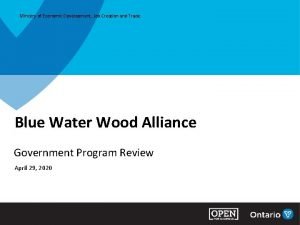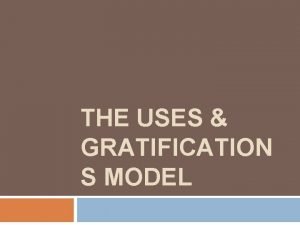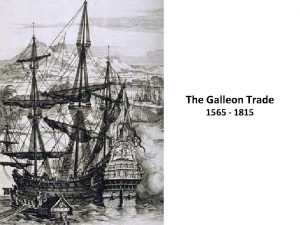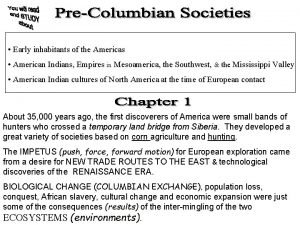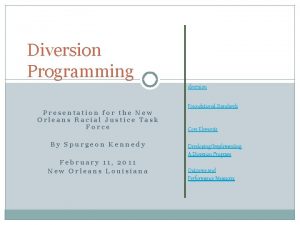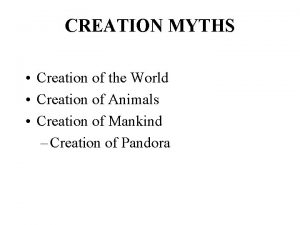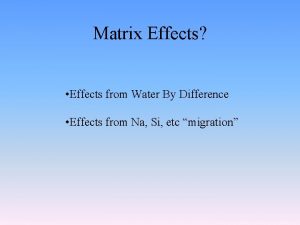Trade Creation And Trade Diversion Effects Of PakistanChina



























- Slides: 27


Trade Creation And Trade Diversion Effects Of Pakistan-China Free Trade Agreement

1. INTRODUCTION

The regional and bilateral trade agreements in recent decade have gained immense importance due to failure of multilateral actions on trade negotiations. The Bilateral treaty in the form of FTA is the step towards economic integration through international trade impacting Macroeconomic and welfare indicators. It is proven fact that more than 50 percent of the trade takes place within the trading blocs with every country member of one block or another, thus influencing the level of trade, competitiveness and welfare at country level (Mastel 2004). One of the important tools for increasing trade within the region and between countries is through FTA which allows for movement of goods from one country to another through concessionary trade policy and impacting the changes in factors of production, creative innovation and economic development of the

Pakistan’s Trade Profile

IMPORT PROFILE Imports of Pakistan are highly vigorous in few countries. Percentage share of import of Pakistan with China gradually increased. In 2000 -2001 Pakistan import with china was 4. 89% and after the Pakistan China FTA signed in 2006 Pakistan imports sharply increased and reached 9. 77%. In 2010 -11 Pakistan imports from china become 14. 85% and in 2015 -16 it reached 25. 05%, Which simply shows that after the Pakistan china FTA Pakistan import very sharply increased with China as shown in table 1.

Table : 1 Percentage Share of Imports in Pakistan’s Total Imports of Major Countries Country USA Japan Saudi. Arabia U. K. Malaysia Germany UAE China 2000 -1 5. 3 11. 7 3. 2 3. 9 3. 5 …… 4. 89 2005 -6 5. 8 5. 6 11. 2 2. 8 3 4. 7 9. 88 9. 77 2010 -11 4. 5 4. 1 11. 3 1. 6 6 2. 3 13. 98 14. 85 2015 -16 4. 36 3. 92 6. 84 1. 39 2. 07 2. 21 13. 04 25. 05 Source: Data collected from Economic Survey (issues for each year), own calculation by using database of “ITC-Trade Map for China” Federal Bureau of Statistics, and Malik and Chaudhary (2012), and WITS

EXPORT PROFILE Pakistan’s export also increases along with imports from china. In 2000 -01 there were no export take place with china, means China did not import from Pakistan but again when Pakistan China FTA signed then we can see that Pakistan’s export to China also increases. In 2005 -2006 Pakistan export share with china become 2. 99%. Pakistan’s exports gradually increase to china and in 2010 -11 its become 16%, and at last in 2015 -16 it become 8. 76% as shown in table 2.

Table 2 Percentage Share of Export in Total Exports of Pakistan to Major Countries Country USA Japan Saudi. Arabia UK UAE Germany China Hong Kong 2000 -01 24. 4 2. 1 2. 9 6. 3 … 5. 3 --- 5. 5 2005 -06 25. 5 0. 8 2. 0 5. 4 7. 83 4. 2 2. 99 4. 1 2010 -11 16. 0 --- 4. 9 8. 57 5. 1 16 2. 0 2015 -16 16. 58 0. 83 1. 96 7. 12 4. 07 5. 19 8. 76 1. 09 Source: Data collected from Economic Survey (issues for each year), own calculation by using database of “ITC-Trade Map for China” Federal Bureau of Statistics, and Malik and Chaudhary (2012), and WITS

Table 3: Pakistan Top 10 Export Partners (2015) Top 10 Export partners United States China Afghanistan United Kingdom Germany United Arab Emirates Spain Bangladesh Netherlands Italy Sources: UN Comtrade (2015) except where stated otherwise Export Volume ($) $3, 661, 588, 348 $1, 934, 925, 758 $1, 722, 215, 727 $1, 572, 801, 201 $1, 146, 260, 566 $899, 029, 683 $782, 258, 070 $700, 566, 738 $666, 949, 155 $618, 148, 814

Table 4: Pakistan Top 10 Import Partners (2015) Top 10 Import partners Import Volume ($) China $11, 019, 005, 363 United Arab Emirates $5, 734, 688, 180 Saudi Arabia Indonesia United States Japan Kuwait India Germany Malaysia $3, 006, 751, 391 $2, 041, 765, 128 $1, 916, 775, 291 $1, 725, 909, 999 $1, 712, 743, 017 $1, 669, 286, 173 $972, 153, 961 $910, 959, 218 Sources: UN Comtrade (2015) except where stated otherwise

Pakistan-China trade Particulars Pakistan has trade deficit with China. It seems that Pakistan’s exports to China are not increasing even after free trade agreement. While, Pakistan’s imports from China increased substantially. Trade balance is in favor of China. Increase in total imports is higher than the increase in exports. Imports show downward trend, first from 2008 to 2009 with a big drop and then slightly from 2012 to 2013. International financial crises is one of the possible cause. In 2015 -16 the volume of Pakistan overall trade with China was $10. 092 billion, including $1. 903 billion export and $8. 126 billion imports and trade deficit in 2015 -16 widened to $6. 223 billion.

Pakistan’s Free Trade Agreement According to Trade Development Authority of Pakistan (TDAP) currently there are four FTAs. These are (1) Pakistan-China FTA (2) Pakistan-Malaysia FTA (3) Pakistan-Sri Lanka FTA and (4) Pakistan-South Asian FTA. Pakistan-China FTA covered more goods as compare to other bilateral trade agreement members. One can see that increase in both exports and imports with China is larger than any other partners.

Pakistan-China Free Trade Agreement It consists of two phases (1) Pakistan-China Early Harvest Program and (2) Pakistan-China Free Trade Agreement” between Pakistan and China was signed on 5 th April 2005 and became operational from 1 st January 2006 along with tariff reduction schedule. The Early Harvest Program (EHP) prelude to the FTA between Pakistan and China. The EHP facilitate duty free access to a number of products for two years. Along with this large number of commodities was exportable by each partner country at “Margin of Preference” MFN duty rates. Before this agreement there was Preferential Trade Agreement in between these two countries that was abolished after the implementation of EHP. There are two types of concessions, one was immediate zero tariff rate and 2 nd type was on which tariffs were eliminated in three years’ time period.

There were total 386 tariff lines at eight-digit level having zero tariff on imports from China. 644 tariff lines at 8 -digit level products having zero tariff rate when exported to China. 100 tariff lines at 8 -digit level faced zero tariff, when exported and imported both from Pakistan and China. As far as 2 nd type is concerned duty becomes zero in three years. Free trade Agreement between Pakistan and China was operational from 1 st July 2007. Under the agreement both the countries offer free market access for commodities and some commodities were at concessional rates. Promotion, diversification, reduction of trade barriers and fair competition, were main objectives of the agreement.

2. LITERATURE REVIEW

S. NO TITLE RESULTS 01. Viner (1950) explains the trade creation, trade Diversion and the welfare effects of a customs union. He argues that if trade creation is higher than trade diversion the union will raise welfare and if trade diversion is higher than trade creation then it will reduce welfare of the member states. 02. Kono (2002) gives a key position He states that members with similar intra and extra-FTA to member’s intra and extra-FTA comparative advantages liberalize trade more rapidly than the comparative advantage. members with dissimilar intra and extra-FTA comparative advantages. 03. Clarete et al. (2003) estimate This paper show that 9 out of 11 preferential trade agreements the effects of regionalism on (PTAs) divert trade. In their analysis, it turns out that only two trade flows in Asia PTAs increase trade among members without affecting trade with the rest of the world.

04. Baier and Bergstrand (2004) argued that net welfare gain/loss of the two countries FTA depends on trade creation and the trade diversion of the members. They state that trade creation is greater the closer are the two countries, and trade diversion is less the remote are the two trading partners from the rest of the world because the trade among the countries that are far from each other is less as compared to the trade among the countries that are closer to each other. 05. Cooper (2006) classification argues that FTA-led shifts in production activities to low cost partner countries lead to unemployment in Countries whose firms are comparatively high cost. The life standard of labor worsens, comparatively, in high cost countries. In addition to poor quality of life, these economists oppose the trade liberalization in the bloc because it degrades environment due to over utilization of natural resources. They say that FTA-led de-location of the firm from high cost countries to relatively low cost member states creates environmental problems.

06. Carrere (2006) analyzed seven They found that in general, these regional trade agreements different regional trade increase trade among members and reduce trade with the rest agreements of the world, suggesting the evidence of trade diversion. 07. Lambert and Mc. Koy (2009) analyze the impact of preferential trade associations on food and agricultural trade. Their findings demonstrate that preferential trade association formation is helpful in increasing the trade among members as well as with non-members in both agricultural and food trade. Furthermore, they show that associations formed by developing countries result in trade diversion. 08. Mahmood & Gul (2012) The paper focuses on understanding the dynamics of pre and post Free Trade Agreement (FTA) agreement between Pakistan and Malaysia”. The results from the descriptive analysis suggests trade in favor of Malaysia while simulation shows increase in export, welfare and trade diversion with automobile sector showing insignificant impact on welfare.

Short Comings in Literature and Contribution of the Present Study The existing literature presents the mixed kind of the results with reference to the effects of economic integration on trade flows. Some studies articulate regional economic integration generates trade among the members without affecting the trade with nonmembers, while, some other papers present that economic integration leads to trade diversion. Most of the studies cover a single sector agriculture or manufacturing sector in their analysis. However, a comprehensive studies covering all sectors of the economy and all the commodity groups to evaluate the impact of regional trade agreements on trade flows. There is no research done on this topic Pakistan China FTA so it is my contribution.

Research Objectives The objectives of the study is as follows: Ø The estimation of “Trade Creation” or “Trade Diversion” effects under Pakistan-China free trade agreement. Ø Construction of gravity model for Pakistan’s bilateral imports. Ø Construction of gravity model for China’s bilateral imports.

MODEL: To analyze the effect of Pakistan-China Free Trade Agreement on trade flows between Pakistan and China, we have two models one for Pakistan and other for china. First we setup the model for Pakistan equation (1) and equation (2) is for china. ln(Pak. M) = α 1 + α 2 ln (dis) +α 3 ln(gdp_o) + α 4 ln(gdp_d)+ α 5 ln(pop_o) + α 6 ln(pop_d)+ α 7(com_fta) )+ α 8(fta_BP) + α 9(com_bor)+ α 10 (com_lang)+ µ…………. …. . …(1) Pak. M Dis Pakistan’s bilateral Imports The distance between Pakistan and her trading partner POP_O Population of Pakistan POP_Dis Population of destination country GDP_O GDP of Pakistan GDP_Dis GDP of destination country Com_bor Com_lang Com_FTA Fta_BP µ The common border The common language The Free Trade Agreement Dummy of Pakistan China FTA The free trade agreement dummy for Pakistan FTA with their import partners The Disturbance

ln(Chn. M) = α 1 + α 2 ln (dis) +α 3 ln(gdp_o) + α 4 ln(gdp_d)+ α 5 ln(pop_o) + α 6 ln(pop_d)+ α 7 com(fta) α 8(fta_BP) + α 9(com_bor)+ α 10 (com_lang)+ µ ……………. . …(2) Chn. M Dis China’s bilateral imports The distance between China and her trading partner POP_O Population of China POP_Dis Population of destination country GDP_O GDP of China GDP_Dis GDP of Destination country Com_bor Com_lang Com_FTA Fta_BP µ The common border The common language The Free Trade Agreement Dummy of Pakistan China FTA The free trade agreement dummy for China FTA with their import partners The Disturbance

DATA SOURCES The data for Total Bilateral imports of Pakistan and China are obtained from the UNCOMTRADE. In which we incorporates the 64 top Import partners of both Pakistan and China, which covered more than 80% imports of the country. The data for other variables such as population of origin and destination, GDP of origin and destination obtained from World Bank online database. The data for distance and other gravity variables collected from CEPII database. Time period taken from 1990 to 2015.

4. ECONOMETRIC METHODOLOGY ØPooled OLS regression ØPanel Random Effect Technique ØPanel Fixed Effect Technique

EXPECTED POLICY IMPLICATIONS q. The present research will help to formulate policies to enhance trade between China and Pakistan. q. This research will help to formulate policies for the development of external sector performance. q. A free trade agreement leads to a better outcome if trading partners have high trade complementarities. Therefore, we explored prospect of bilateral trade in connection with a proposed free trade agreement between Pakistan and China.

 Trade diversion and trade creation
Trade diversion and trade creation Trade diversion and trade creation
Trade diversion and trade creation Trade diversion and trade creation
Trade diversion and trade creation Trade diversion and trade creation
Trade diversion and trade creation Ministry of economic development job creation and trade
Ministry of economic development job creation and trade Diversion uses and gratification
Diversion uses and gratification Liaison and diversion interview questions
Liaison and diversion interview questions Investigating and making a case for drug diversion
Investigating and making a case for drug diversion Dbd diversion
Dbd diversion Republic act no. 9344
Republic act no. 9344 Diversion head work
Diversion head work Drug diversion investigator
Drug diversion investigator Drug diversion investigation checklist
Drug diversion investigation checklist Diversion mechanism
Diversion mechanism Upper lobe venous diversion
Upper lobe venous diversion Drug diversion investigation checklist
Drug diversion investigation checklist Judge robert tejeda
Judge robert tejeda Urine diversion
Urine diversion Eviction diversion program richmond va
Eviction diversion program richmond va Drug diversion best practices
Drug diversion best practices Galleon trade extended contact with
Galleon trade extended contact with Effects of the slave trade on africa
Effects of the slave trade on africa Tramp trade software
Tramp trade software Intelligence creation and use and bi governance
Intelligence creation and use and bi governance The trade in the trade-to-gdp ratio
The trade in the trade-to-gdp ratio Fair trade not free trade
Fair trade not free trade Ted talk slave trade
Ted talk slave trade Verily in the creation of the heavens and earth
Verily in the creation of the heavens and earth




